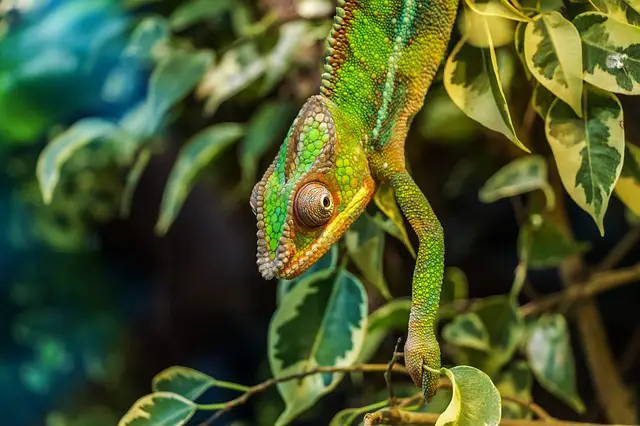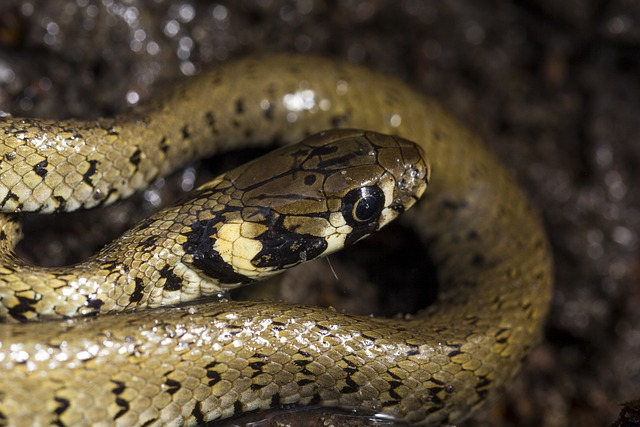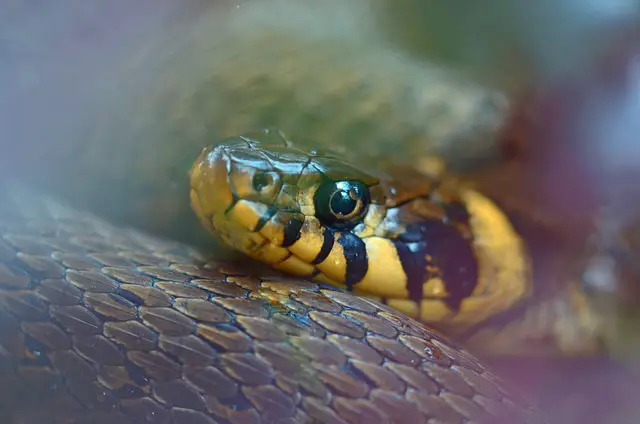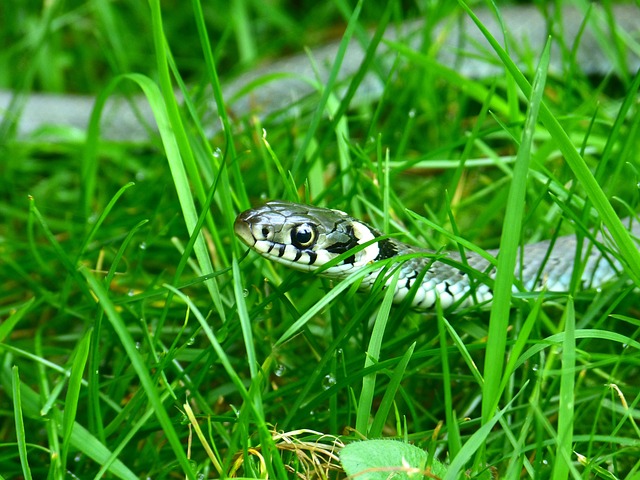All pet owners want their chameleons to remain in the best health so it can be worrying when you notice symptoms.
Just like humans, it is possible for the chameleon to experience a back-up of the digestive system and this can result in the animal being unable to poop.
However, in chameleons, rather than being called constipation, this condition is known as impaction.
How frequently your chameleon goes for a number 2 depends on its age but in any case, if you don’t notice your pet going to the toilet, it is important to act quickly as impaction can become dangerous for these beautiful creatures.
In this guide, we are going to be discussing the reasons that a chameleon may become impacted and what you can look out for.
We will also discuss how to care for an impacted chameleon and the best way to get things moving smoothly again.
What Causes Impaction In Chameleons?
There are several things that could be responsible for impaction in chameleons and one of the most common is dehydration.
It is important to regularly mist the enclosure but diet can also be a contributing factor to dehydration so it is vital to make sure that food is not too dry or cold.
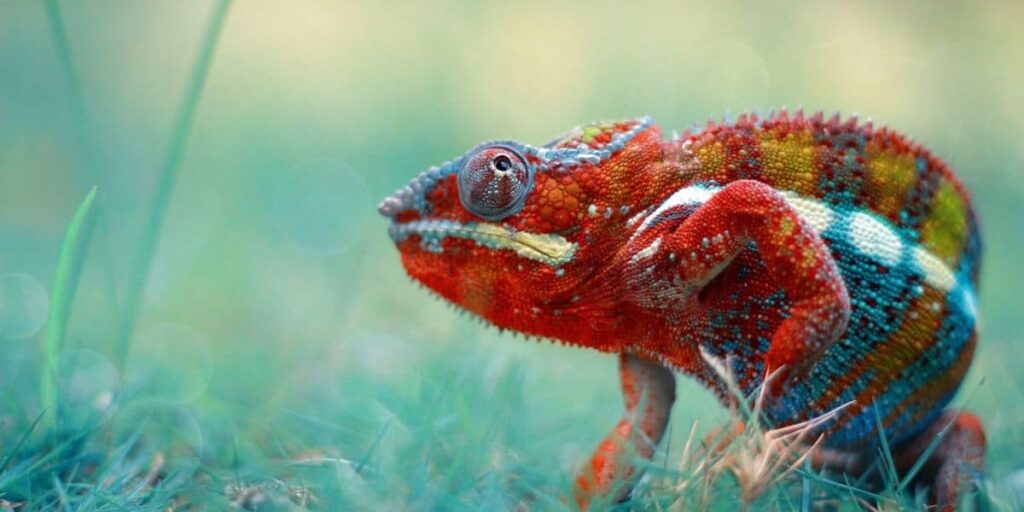
Furthermore, impaction can be caused by a high intake of parasites. Moreover, large particle substrates can be to blame.
Since chameleons are arboreal, there is no real reason to place any substrate in the tank.
If the animal notices prey on the substrate, it will flick out its tongue and eat it, as well as ingesting some of this.
What Are The Symptoms Of Impaction In Chameleons?
One of the most obvious signs that your cham is impacted is that they are not defecating.
We will look at how often your pet should be toileting in a little more detail later on but as a chameleon owner, it is important to familiarise yourself with your animal’s habits.
If you notice that this changes in any way or that the stools are drier than usual, or there are any significant changes, you should take action.
Other signs that your pet is impacted may be that he loses interest in his food.
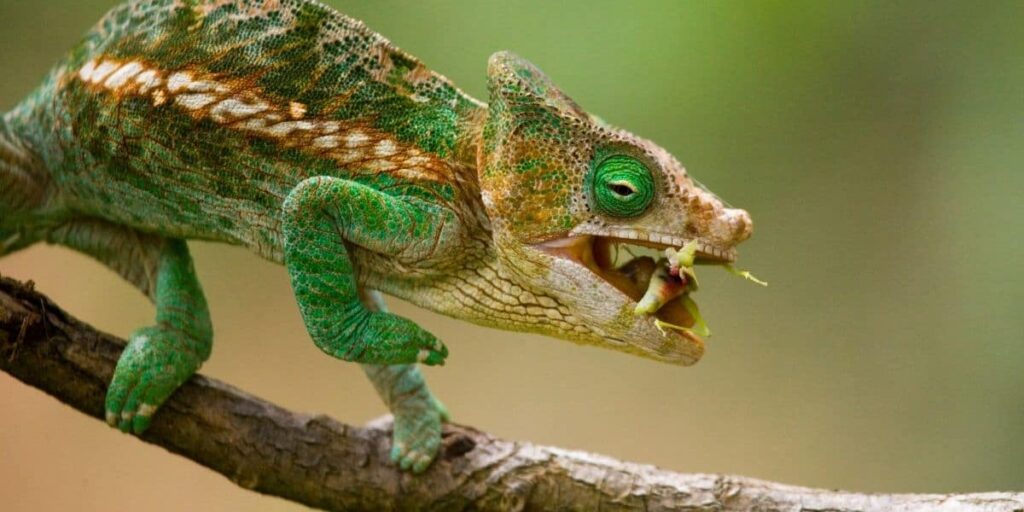
If he is full of faeces, then he isn’t going to feel comfortable loading his body with more food.
In conjunction with this, you might notice that the chameleon’s stomach is bloated and feels a little more swollen than is normal.
If you observe your pet, you might notice that he strains to defecate. In some cases, he may be successful but this shouldn’t be taken as a sign that everything is OK.
If the cham is straining, be sure to check his poop to make sure that impaction might not be around the corner.
In some severe cases, chameleons with impaction may lose the use of their hind legs. This should be treated seriously.
How Often Should My Chameleon Poop?
Chameleon’s bowel habits will change over the course of their lives.
However, as a general rule, juveniles may poop every day whereas adults may go to the toilet once every four or five days.
The frequency of their movements will depend on several things including how often they have a meal. The type of food that it eats and how hydrated the animal is will also depend on how often it produces stools.
How To Treat Impaction In A Chameleon
If you are certain that your chameleon is suffering from impaction then it is essential to get on top of the problem as soon as possible.
One of the first things you can do is to try to prevent the condition from developing further or again in the future. This can be easily achieved by assessing your husbandry.
This will mean taking out any substrate from the enclosure as well as ensuring that the basking temperature is spot on.
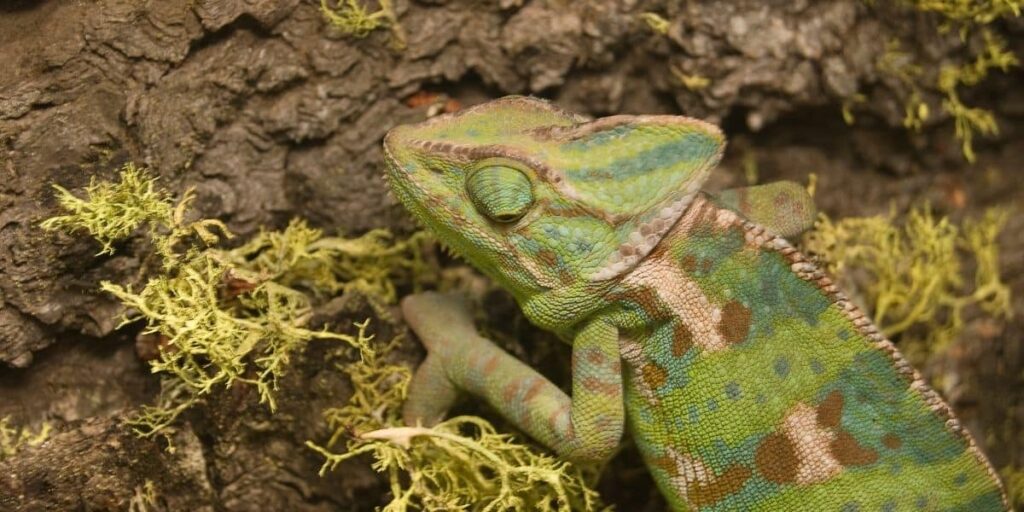
You should also make sure that you chameleon is fully hydrated since this is one of the most common causes of impaction in these animals.
Typically, chameleons are given a water bowl like other animals but need to have their enclosures misted so that they can lick water from the leaves so be sure to regularly mist their home.
If the impaction still doesn’t begin to shift after attempting to rehydrate your pet then you may need to provide them with a little cod liver oil that can work to loosen any blockages.
You will need to give this orally using a syringe but be sure to do this in small doses and don’t do it more than once a week.
Another viable solution is to place the chameleon in a warm bath of water. It is important to monitor the animal as drowning is possible.
Leave your pet here for fifteen minutes and this could be enough to encourage a bowel movement.
In some cases, you may not see any movement after trying all of the above tips.
In this instance, you will need to have the chameleon seen by an exotics vet who will be able to provide safe and effective treatment.
It is important not to leave it too long as when untreated, there is a possibility that impaction can lead to death.
Conclusion
Chameleons are generally healthy animals if they are given the right care.
But even the most attentive owners will find that, from time to time, their pets suffer from minor health problems. Impaction is a minor problem that can be addressed easily.
However, if it is left untreated, it can become fatal so if you notice any of the symptoms we have discussed in this article, it is crucial to begin treatment right away.
- Do Black Caiman Live in Groups? Exploring the Social Behavior of These Large Reptiles
- Do Black Caiman Have Predators? Exploring the Threats to This Amazonian Reptile
- Do Black Caiman Eat Toucans? Exploring the Diet of Black Caimans in the Wild
- Do Black Caiman Eat Sloths? The Truth About the Diet of Black Caiman
- Can a Black Caiman Kill a Human? Exploring the Predator’s Potentially Deadly Bite

